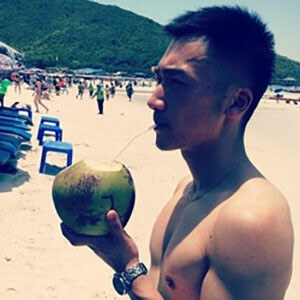某城市河段治理解说英文配音
Phnom Penh Green Belt
—— Renewal Conceptual Design of Yongwang River Governance Area in Phnom Penh, Cambodia
(Part of River Governance)

Yongwang River is located in Yongwang District, Phnom Penh City. It is a natural river way, belonging to seasonal river. Its source is near the sports center. The river way crosses Yongwang district from south to north, winds northward into Tonle Sap River, and finally joins Mekong River. The river way is 8.1km in total length and 20m-40m in width. Residential areas, commercial areas, schools, hospitals, parks, etc. are distributed along the two banks of the river way, with dense population.
Because the middle reaches of the river is blocked and cut off by siltation, the upstream of the river is about 3.04km long, forming a landfill lake, resulting in poor drainage, insufficient flood discharge capacity and serious water accumulation in flood season. At the same time, there is no perfect wastewater interception pipe network and wastewater governance system along the river, resulting in mixed flow and scattered discharge of rain and wastewater into the river, and pollution of underground water source through the river bed infiltration, and odor during natural evaporation. The environment is polluted seriously and affects the health and safety of local residents. With the development of urban construction, the governance of Yongwang River is imperative.
According to the experience of urban black and odorous water governance in developing countries, the governance cannot be accomplished overnight. Black and odorous water governance is a comprehensive and systematic governance process. Aiming at point source, non-point source, internal source and other pollution, it needs to be adopted the method of "Interception, Diversion, Purification, Reduction, Regulation, Maintenance and Measurement" to systematically and comprehensively manage the "Land, Water and Atmosphere" by trinity. The governance needs a certain period and the process needs to be implemented step by step, combined with the urban construction and development of Phnom Penh. According to the current situation and problems, the river governance scope of the project is 3.04km long from the source of the river to the silting and blocking section in the middle reaches. The governance plan is divided into three stages: short, medium and long term.
Short-term governance
In the short-term, the governance will solve the problem of odor emission in the river rapidly. After dredging the river, the planning and layout of the river embankment line will be carried out. The embankment distance will be temporarily controlled according to the current river width. The embankment type will be stone masonry rigid revetment, and the inlet of rainwater and wastewater collection along the line will be reserved. The top of the river will be covered by reinforced concrete bent and simply supported movable cover plate, and 0.8m thick soil will be covered on the top as greening and other purposes. Secondly, the land is reserved for wastewater governance facilities at the downstream end of the river for medium-term governance.
The short-term governance measures are the temporary measures in the early stage of the whole governance plan, which can quickly solve the problem of river odor emission, and it is the prerequisite for the implementation of the medium and long-term governance plan. The construction of this measure is easy, the construction cost is relatively low, and it has the feasibility of later governance and transformation.
Medium-term governance
The medium-term governance will solve the problems of rainwater and wastewater mixed flow and flood control safety along the river. Firstly, through laying wastewater pipes and rainwater intercepting and diverting wells along both sides of the river, the rainwater and wastewater along the river will be intercepted and transported to the new wastewater plant for wastewater governance, among which the A²O plus advanced governance process will be adopted for wastewater governance technology, and the reclaimed water meeting the reuse standard after governance. The newly built water pipes along the river will be transported to the river source as the return water source for water body replacement and the municipal greening water source along the line.
Secondly, dredge the silting and blocking section of the box culvert in the middle reaches to connect the upstream and downstream of the river, and take the downstream channel as the discharge channel for rainwater in the governance section to flow into the Mekong River. At the same time, due to the influence of the water level of the Mekong River during the flood season, there is the problem of river water backflow in the downstream Tonle Sap River. In order to prevent the flood caused by the river water backflow in the governance section during the flood season, a floodgate will











